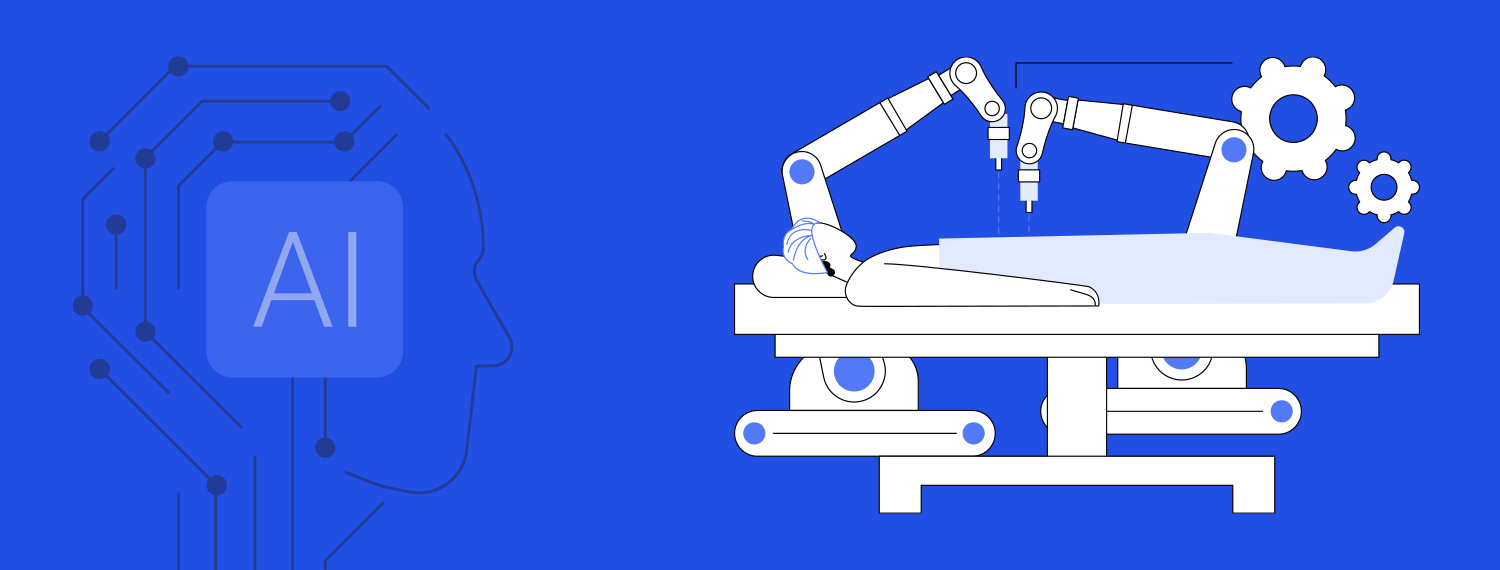The advancements in healthcare have been instrumental in developing patient-centric healthcare systems, facilitating prompt, efficient, reliable, and cost-effective solutions for prognosis, medication, treatment, and prevention. AI-assisted processes in the healthcare jobs industry have revolutionized healthcare systems.
Yet, the question remains – how far will it go, and will technology replace the human element completely?
The advancements in healthcare have been instrumental in developing patient-centric healthcare systems, facilitating prompt, efficient, reliable, and cost-effective solutions for prognosis, medication, treatment, and prevention. AI-assisted processes in the healthcare industry have revolutionized healthcare systems.
Yet, the question remains – how far will it go, and will technology replace the human element completely?
An AI system is designed and trained to solve specific problems, essentially its entire world. Unlike humans, AI systems cannot freely interact with their surroundings. They are machines, not people. However, the challenge remains how healthcare companies will utilize AI to enable the human workforce, not replace them completely.
We can foresee a future where humans and AI will coexist in the healthcare industry and make the processes simpler, more efficient, and more productive.
This blog discusses AI and robotics and how they are transforming healthcare jobs.
How AI and Robotics are revamping healthcare jobs
AI and robotics are revamping healthcare jobs by modernizing processes. We have listed some implementations here:
- Improving precision and enhancing patient care.
- Predictive analytics and optimizing patient outcomes.
- AI and robotics assistance in diagnostics.
- Robotics aids in surgeries, repetitive tasks, patient care, and reducing human errors.
- Minimizing physical strain on healthcare.
Consequently, these applications are revolutionizing the healthcare sector by achieving a remarkable equilibrium between technological assimilation and human proficiency.
AI and Robotics – Transforming healthcare roles while harmonizing human skills with technological advancements
The world’s population is aging, and the increasing demand raises an ever-impacting pressure on most countries from the perspective of the recent arrival of automation, which brings increasing efficiency and healthcare productivity.
- Automation is undoubtedly a huge opportunity that will upcycle healthcare growth. AI automates the administrative care of healthcare. Despite that opinion, we will always need medical staff to perform the treatments and interfere with the patients.
- AI also allows personalized medication, data analysis, and remote patient monitoring.
- Across the board, AI enhances the efficacious outcomes in healthcare. The transformation in the job functions requires continuous learning for professionals to thrive.
AI, Robotics, and Humans – Strengthening and complementing each other rather than replacing.
Integrating robotics and automation in healthcare practices can revolutionize the industry, increase efficiency, enhance patient safety, enable improved outcomes, and pave the way for a bright future in healthcare.
However, AI and robotics integration with healthcare also raise concerns about job displacement; while AI can automate specific tasks, it is essential to remember that it is meant to work alongside healthcare professionals, not replace them.
- Safety and transparency are significant considerations regarding AI’s challenges. Organizations should implement robust data protocols to safeguard sensitive information from unauthorized access.
- Bias in AI algorithms can have significant implications where they can lead to discriminatory outcomes and perpetuating inequalities. Addressing and mitigating bias in AI algorithms is crucial to ensure fair and equitable outcomes.
- Regarding job creation and displacement, the changing job landscape will be impacted by AI-driven automation. While it can potentially displace specific jobs, it is also expected to create new ones.
- The jobs that involve repetitive tasks are most likely to be automated, so individuals are expected to develop the skills that complement AI technologies in this changing job market.
Future of AI and robotics in healthcare
AI combined with robotics enables us to build intelligent machines capable of interacting with their environment. AI allows robots to perceive their surroundings, make decisions, and manipulate objects. Its applications range from improving patient care and outcomes to enhancing operational efficiency using robotics in medical research—automated health tracking of patients and determining the patient’s priority assessments in emergency service. Programming personalized health programs in robots enables users to leverage them for multifunctional purposes.
Conclusion
Summarizing the consequences and critical challenges of AI and robotics in healthcare requires collaborative efforts from healthcare professionals, technology developers, and other stakeholders by prioritizing data quality, navigating regulatory compliances, and investing in workforce training. The healthcare industry can harness the transformative potential of AI and robotics to enhance healthcare development and improve patient outcomes.
In the AI era, healthcare jobs aren’t being replaced but transformed. There are vast opportunities for growth and fulfillment as jobs evolve and improve. Capleo Global facilitates connections with skilled healthcare professionals to navigate this transformative landscape.

